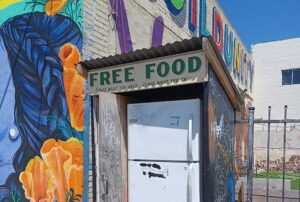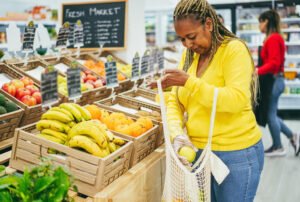
November 23, 2020; ABC News and Brookings Institution
“Food insecurity” is defined by the US Department of Agriculture as “a lack of consistent access to enough food for an active, healthy life.” A report issued last month by the nonprofit Feeding America found that in 2018, 37.2 million Americans were food insecure. In 2020, that number had grown to 50.4 million.
Extrapolating from those figures, the number of children who were food insecure increased from 11.2 million to 17 million between 2018 and 2020. Feeding America projects that one in six Americans, and a quarter of the nation’s children could face hunger in 2020 because of the pandemic.
Who makes up these large numbers of additional hungry people? Many of them have become food insecure in the last year due to job loss, unemployment ending, inability to work due to childcare demands, or the need to stay home and supervise home schooling of children.
“With 11.1 million people in America still unemployed, many are turning to the food banks for the first time,” Feeding America says in a news release. “Previous food bank surveys revealed that an estimated 40 percent of people seeking assistance from food banks had never needed help before.”
Sign up for our free newsletters
Subscribe to NPQ's newsletters to have our top stories delivered directly to your inbox.
By signing up, you agree to our privacy policy and terms of use, and to receive messages from NPQ and our partners.
A recent Brookings Institution study on food insecurity in the US found even more detail about the impact of COVID-19 on families. And from that report, clearly, low-income families with children are hardest hit by food insecurity. They are more likely to have unstable childcare arrangements and with COVID restrictions have also lost the food their children received from free or reduced cost meals at school. Once these families are home with their children, the Brookings researchers report:
About 50 percent of families with school-age children and 44 percent of families only with children who are below school-age reported in October that they had experienced a loss of income during the pandemic. Of the parents reporting that their children do not have sufficient food, 73 percent of parents of school-age children and 71 percent of parents of only younger children also reported experiencing an income loss.
But food insecurity seems to be an “equal opportunity” hardship. Just ask Brian Greene, president and CEO of the Houston Food Bank, where they are distributing 800,000 pounds of food each day. That number is 350,000 pounds more than before COVID-19. And, as Greene has noted, “Most of the distributions we put in the trunk, I can tell you the trunks we’re putting food in belong to cars that are all over the map. People who you can tell were doing fine and then suddenly they weren’t.” Green has also noted his shrinking volunteer corps—something NPQ has observed, too, as nonprofits serving the food insecure look for alternatives and often find them.
A great strength of the nonprofit sector is in its ability to solve problems and seek new solutions when confronted with sudden changes and urgent needs but while food insecurity is not new, the magnitude of the problem is. COVID-19 is exposing all manner of basic inequities across the country and one of those is the existence of widespread hunger in millions as the few make billions from the pandemic. This is, in the end, not a problem that should be addressed with a charity but with a justice orientation but, in the meantime, nonprofits try to fill that breach.—Carole Levine













